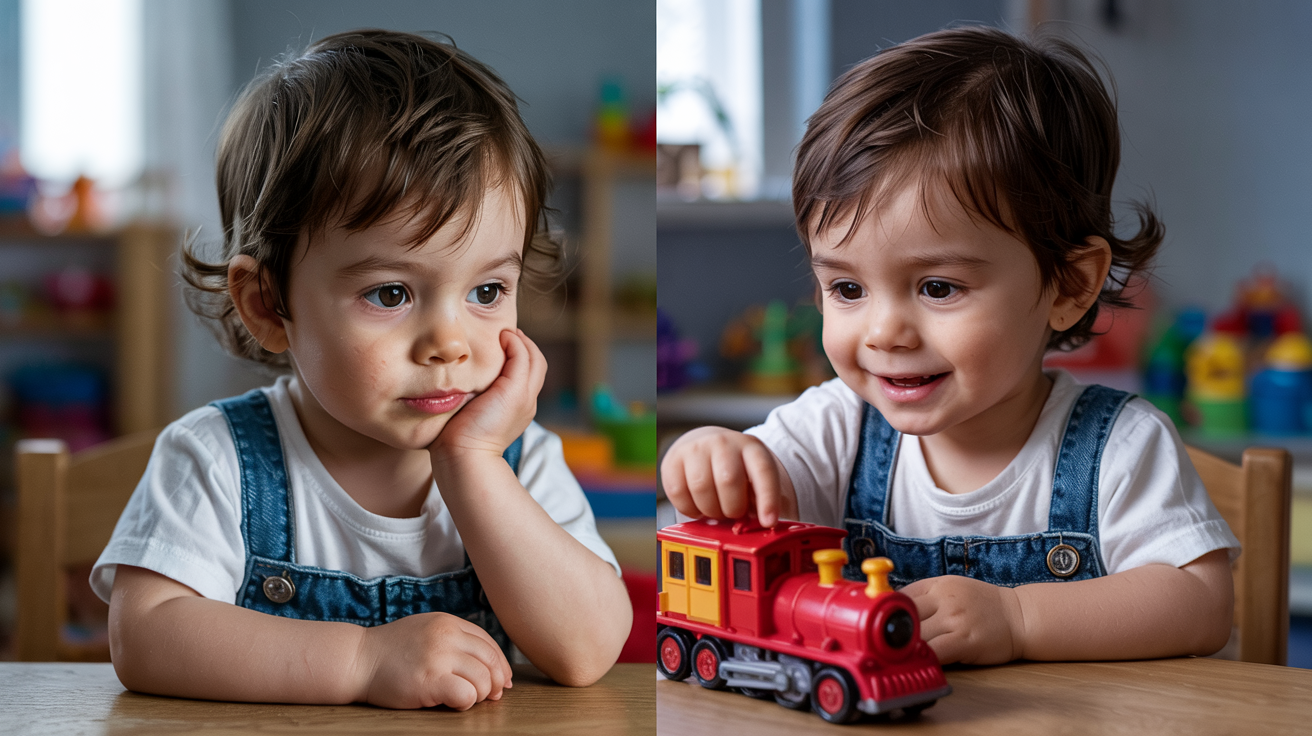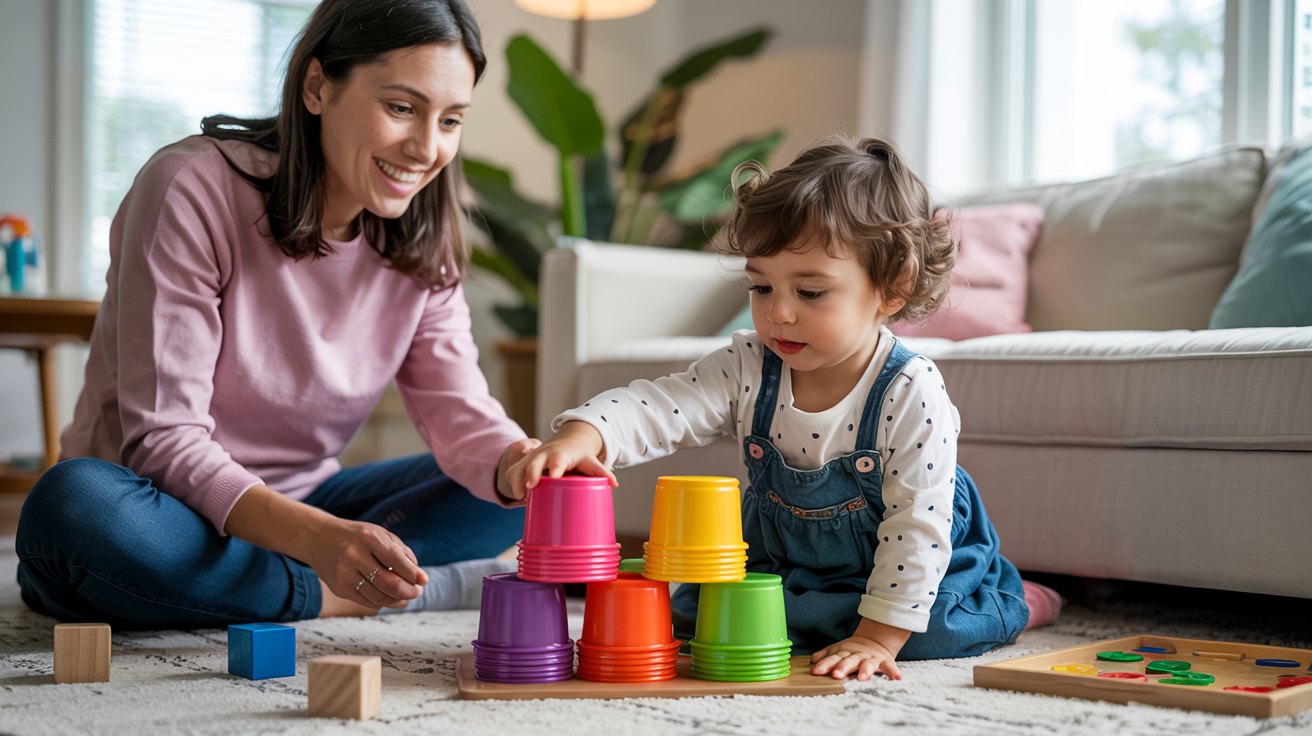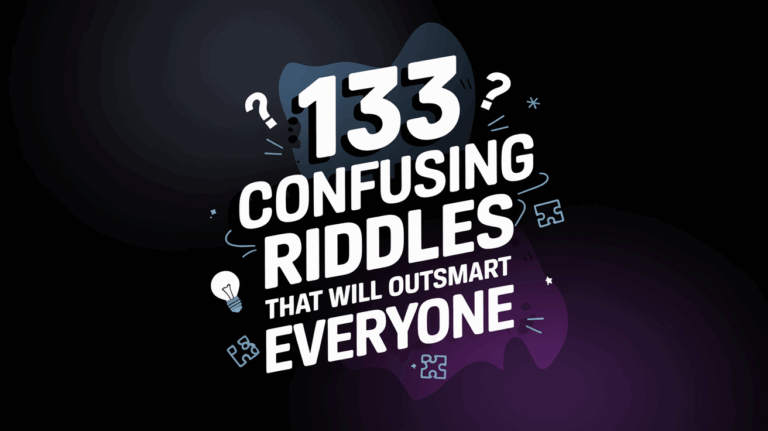Kids often act without thinking. Have you noticed how your child grabs toys, yells out answers, or jumps into action before considering the results? This lack of impulse control is normal but can cause problems at home and school.
Teaching impulse control is possible with the right activities. These simple, fun tasks help children learn to stop, think, and make better choices.
This article offers practical activities you can try today with your child. These games and exercises work well for different ages and can fit into your daily routine. They’ll help your child build the important skill of thinking before acting.
Understanding Impulse Control in Children

Children often struggle to pause and think before acting.
This happens because the part of the brain that controls planning and decision-making is still growing. When your child grabs a toy from another child or blurts out answers in class, they’re showing normal issues with impulse control.
Common challenges children face with impulse control
Young kids usually struggle with waiting their turn, staying in their seats, or keeping their hands to themselves. They might interrupt others when they talk or rush through their homework to get to playtime.
These behaviors happen because children want what they want right now, not later.
Signs your child may need help with impulse regulation
Watch for these warning signs:
- Acting without thinking about results
- Having trouble waiting for their turn
- Getting very upset when told “no”
- Rushing through tasks and making careless mistakes
- Finding it hard to stop fun activities
- Taking things that belong to others
Benefits of improving impulse control (academic, social, emotional)
When children learn to control their impulses, they do better in school. They can focus on lessons, follow directions, and finish their work. Their test scores often go up as they make fewer careless mistakes.
Kids with good impulse control also make friends more easily. They wait their turn, share, and solve problems with words instead of pushing or grabbing. Other children enjoy playing with them because they follow the rules of games.
Emotionally, these children feel better about themselves. They have fewer meltdowns and can handle disappointment. This builds confidence and helps them feel more in control of their actions and feelings.
Easy Impulse Control Activities for Kids

Short on time but want to help your child gain better self-control?
These quick, simple activities fit into your busy day and need few materials, making impulse control practice both easy and effective.
1. Red Light, Green Light
This classic outdoor game encourages children to stop and go on command, helping them build impulse control. It sharpens listening skills and quick decision-making as kids learn to regulate movement based on visual and auditory cues.
-
Things Required: Open space
-
How to Play: One child says “green light” to let others move forward and “red light” to make them freeze. Anyone caught moving on red returns to the start.
-
Benefits: Improves self-regulation, enhances listening, and builds patience
2. Simon Says
“Simon says” is a fun, interactive game that tests kids’ ability to follow instructions only when prompted with “Simon says.” It teaches children to pause and think before acting, making it excellent for developing impulse control.
-
Things Required: No materials needed
-
How to Play: One child is “Simon” and gives commands. Players only follow commands that begin with “Simon says.”
-
Benefits: Boosts focus, develops inhibitory control, enhances attention
3. Freeze Dance
Kids dance to music and must freeze when it stops. This activity amplifies motor control, listening, and timing, while teaching children to respond appropriately and quickly inhibit movement.
-
Things Required: Music player
-
How to Play: Play music and let kids dance. When the music stops, they must freeze. Those who move are out or restarting.
-
Benefits: Encourages body awareness, self-control, and focus
4. Jenga
Jenga is a block-stacking game requiring players to think carefully and act with precision. Children learn to plan their moves and resist the urge to act hastily, supporting patience and impulse control.
-
Things Required: Jenga blocks
-
How to Play: Players take turns removing one block at a time from the tower without toppling it.
-
Benefits: Improves focus, patience, and motor planning
5. Musical Chairs
This fast-paced game strengthens self-control by requiring kids to stop and sit when the music halts. It also teaches graceful handling of losing and encourages quick thinking and emotional regulation.
-
Things Required: Chairs, music player
-
How to Play: Place chairs in a circle (one less than the players). Walk around them while music plays. Sit when it stops.
-
Benefits: Enhances reaction time, emotional control, and social skills
6. Follow The Leader
Kids mimic the actions of a leader, promoting attention and controlled movement. They must stay engaged, copy accurately, and control impulses not to rush ahead or go off track.
-
Things Required: No materials needed
-
How to Play: One child leads with various actions; others follow, mirroring the movements.
-
Benefits: Encourages attention, motor planning, and impulse control
7. Balloon Volleyball
This soft and safe activity teaches turn-taking, focus, and physical restraint. Players must control their hits and stay aware of others, helping to build teamwork and self-regulation.
-
Things Required: Balloon, string, or net
-
How to Play: Use a balloon and lightly hit it over a makeshift net. Players try to keep it from touching the ground.
-
Benefits: Improves coordination, patience, and impulse regulation
8. Board Games Like Candy Land
Turn-based games teach kids to wait patiently, think ahead, and manage frustration. Candy Land, in particular, builds anticipation and impulse control as players take turns moving across the board.
-
Things Required: Candy Land board game
-
How to Play: Players draw cards to move along the board, following color-coded paths toward the goal.
-
Benefits: Fosters patience, rule-following, and emotional control
9. Mirror Movement Game
Kids pair up and mirror each other’s movements. This requires close observation and inhibition of spontaneous movement, making it an ideal activity for developing impulse control and focus.
-
Things Required: None
-
How to Play: One child acts as the leader, slowly moving while the partner mirrors them exactly. Roles switch.
-
Benefits: Boosts attention, coordination, and self-regulation
10. Yoga Poses Challenge
This calm and focused activity encourages stillness, body awareness, and breath control. Holding poses helps children develop patience, balance, and inner discipline, supporting emotional and physical self-regulation.
-
Things Required: Yoga mat (optional)
-
How to Play: Call out or show a yoga pose. Kids must hold it for a count of 10 or more.
-
Benefits: Improves mindfulness, focus, and body control
11. Counting breaths
This calming technique teaches kids to slow down and focus inward. By counting their breaths, they become more aware of their body and emotions, learning to pause rather than react impulsively.
-
Things Required: Quiet space
-
How to Play: Inhale slowly and count “1,” exhale and count “2,” continuing up to 10 and repeating.
-
Benefits: Emotional regulation: Helps reduce stress and impulsive reactions
12. Building with blocks
Constructive play encourages kids to plan, think critically, and control their movements. They learn to take turns and solve problems patiently, reinforcing decision-making and reducing impulsive behavior.
-
Things Required: Building blocks (e.g., LEGO, wooden blocks)
-
How to Play: Kids build structures while planning how pieces fit and what comes next.
-
Benefits: Planning skills: Develops control, patience, and spatial awareness
13. Puzzle time
Puzzles engage children in focused, quiet play, promoting problem-solving and the ability to persist through challenges. They must pause, observe, and think before placing each piece.
-
Things Required: Age-appropriate puzzle sets
-
How to Play: Let the child assemble the puzzle, encouraging trial and error and step-by-step solving.
-
Benefits: Cognitive control: Encourages persistence, focus, and patience
14. Playdough sculpting
Squishing, rolling, and shaping playdough allows kids to release energy while engaging their hands in focused work. It promotes calmness and strengthens focus on the task.
-
Things Required: Playdough, tools for shaping (optional)
-
How to Play: Let kids freely create shapes or follow sculpting prompts.
-
Benefits: Sensory focus: Calms the mind and builds fine motor control
15. Color sorting race
This activity adds a burst of excitement while still requiring focus and coordination. Kids must resist the urge to rush and sort objects correctly, helping train attention and control.
-
Things Required: Colored objects and matching containers
-
How to Play: Time the child as they sort by color, challenging accuracy over speed.
-
Benefits: Impulse restraint: Reinforces accuracy, control, and color recognition
16. Drawing to music
This creative task encourages kids to express feelings through art while controlling their tempo based on the music’s rhythm, blending emotional awareness with impulse control.
-
Things Required: Paper, crayons/markers, music player
-
How to Play: Play different types of music and let kids draw how it makes them feel or move.
-
Benefits: Emotional expression: Builds awareness, self-control, and creativity
17. Animal walk races
Acting out animal movements is fun and physical, but also demands body control. Children must focus on mimicking specific patterns instead of running wildly.
-
Things Required: Open space, a list of animals
-
How to Play: Call out animals like crab, frog, or bear; kids move accordingly to a finish line.
-
Benefits: Motor regulation: Enhances coordination, balance, and inhibitory control
Fun Impulse Control Activities for Kids

Learning to think before acting doesn’t have to be boring! These playful activities help children practice impulse control while having so much fun they won’t even realize they’re building important life skills.
18. Scavenger hunt
This game turns the environment into a challenge course requiring observation, planning, and patience. Kids practice waiting, choosing thoughtfully, and working methodically to complete the hunt.
-
Things Required: A list of items to find, a basket, or a bag
-
How to Play: Give kids a list of objects or clues to find around the house or yard.
-
Benefits: Focus and sequencing: Promotes organized thinking and delayed gratification
19. Obstacle course
Kids channel their energy while learning to move with purpose and wait for instructions. Obstacle courses improve body awareness, patience, and the ability to follow multi-step directions.
-
Things Required: Cones, chairs, ropes, household items
-
How to Play: Set up stations with activities like crawling, jumping, or balancing, and guide them through.
-
Benefits: Body control: Supports planning, restraint, and coordination
20. Listening walk
A mindful walk where kids focus on the sounds around them builds awareness and requires them to resist distractions. It’s a great grounding exercise for busy or impulsive minds.
-
Things Required: An Outdoor or quiet environment
-
How to Play: Ask kids to walk quietly and name as many sounds as they can hear.
-
Benefits: Mindfulness: Sharpens concentration and present-moment awareness
21. Storytime pause-and-think
During a read-aloud session, pausing to ask questions helps children reflect before responding. This practice strengthens self-regulation and critical thinking as kids must wait, listen, and then engage thoughtfully.
-
Things Required: Age-appropriate book
-
How to Play: Read a story and pause periodically to ask, “What do you think happens next?” or “How do you think they feel?”
-
Benefits: Verbal impulse control: Encourages thoughtful responses and emotional reflection
22. Bubble popping challenge
Bubbles are exciting, but asking kids to pop only specific bubbles builds restraint. This turns a simple game into an impulse control exercise.
-
Things Required: Bubble solution, bubble wand
-
How to Play: Blow bubbles and instruct kids to pop only the biggest, smallest, or a set number.
-
Benefits: Selective attention: Teaches focus and delayed gratification
23. Pretend play role reversal
Switching roles with others during pretend play (e.g., child becomes teacher) encourages empathy, patience, and regulation of reactions as kids adjust to different perspectives.
-
Things Required: Costumes or pretend play items (optional)
-
How to Play: Assign different roles and let kids act them out, occasionally switching roles to see the other side.
-
Benefits: Empathy and control: Builds emotional awareness and turn-taking
24. Slow-motion tag
In this version of tag, all players must move in exaggerated slow motion, which requires control, awareness, and the ability to resist running fast.
-
Things Required: Open space
-
How to Play: Choose one person to be “it,” but everyone, including “it,” must move in slow motion throughout the game.
-
Benefits: Physical restraint: Teaches patience and body regulation
25. Squeeze and release stress balls
A quiet activity that provides sensory input while giving kids a physical outlet to manage their emotions and control impulses.
-
Things Required: Stress balls or squishy toys
-
How to Play: Instruct children to squeeze for 5 seconds, then slowly release, repeating during moments of restlessness.
-
Benefits: Tension release: Helps regulate energy and soothe emotions
26. Mindful coloring
Coloring within the lines or focusing on one section at a time teaches children patience and helps train the brain to slow down and stay focused.
-
Things Required: Coloring book, crayons, or markers
-
How to Play: Encourage children to pick one area to color slowly and mindfully, noticing the colors and shapes.
-
Benefits: Concentration: Supports fine motor control and emotional calm
27. Whisper game
This quiet game teaches children to adjust their volume and resist shouting or blurting out. It also strengthens attention and auditory memory.
-
Things Required: None
-
How to Play: Whisper a sentence to one child, who whispers it to the next, continuing around the circle.
-
Benefits: Volume control: Builds listening and verbal restraint
28. Pass the sound
Kids must listen closely and replicate a sound without changing it. This requires patience and careful auditory attention, training them to stop and think before reacting.
-
Things Required: None
-
How to Play: The first person makes a noise (e.g., a clap or hum), and each child must copy it exactly, passing it along the circle.
-
Benefits: Listening focus: Reinforces attention and self-control
29. Emotion charades
Children act out emotions without words, while others guess. This helps them recognize feelings, manage how they express themselves, and stay in control of impulses.
-
Things Required: Emotion cards or written feelings
-
How to Play: One child acts out an emotion silently, and the group guesses which one it is.
-
Benefits: Emotional intelligence: Enhances empathy and expression control
30. Gratitude journaling
Writing or drawing things they’re grateful for helps children slow down and reflect positively. It’s a calming habit that encourages intentional thinking over automatic reacting.
-
Things Required: Notebook, pencils or crayons
-
How to Play: Ask children to write or draw 1–3 things they’re thankful for each day.
-
Benefits: Positive focus: Promotes emotional regulation and mindfulness
31. Matching card games
Games like Memory require kids to wait their turn, remember card positions, and think before flipping. It strengthens working memory and teaches patience through structured play.
-
Things Required: Matching card set (Memory game)
-
How to Play: Players take turns flipping two cards to find matching pairs. If cards don’t match, it’s the next player’s turn.
-
Benefits: Memory and patience: Boosts focus, turn-taking, and cognitive skills
32. Water pouring relay
Pouring water carefully between containers demands focus and steady control, helping kids build concentration and resist the urge to rush.
-
Things Required: Cups, water pitchers, or containers
-
How to Play: Kids pass water from one container to the next, trying not to spill, working either individually or in teams.
-
Benefits: Motor control: Encourages mindfulness, accuracy, and patience
33. Bean bag toss
Aiming and tossing a bean bag helps children pause and focus before acting. It improves motor skills while encouraging kids to wait their turn and regulate their throws.
-
Things Required: Bean bags, buckets, or marked spots
-
How to Play: Kids stand in a line and toss bean bags toward a target, trying to score points or land in specific spots.
-
Benefits: Hand-eye coordination: Promotes turn-taking and precision
34. Button sorting
Sorting small buttons by size, color, or shape develops focus and careful hand movements, teaching children to slow down and complete a task mindfully.
-
Things Required: A variety of buttons, sorting trays
-
How to Play: Ask children to sort the buttons into groups, either timed or as a quiet activity.
-
Benefits: Task persistence: Builds attention to detail and fine motor control
35. Time-out reflection corner
A calm space where kids can go to cool down, breathe, or reflect after feeling overwhelmed. This gives them ownership of their emotions and helps reset their behavior.
-
Things Required: Soft seating, sensory toys, reflection prompts
-
How to Play: Guide children to use the space when upset and choose calming tools, or write/draw about their feelings.
-
Benefits: Self-awareness: Promotes calming habits and emotional self-regulation
36. Count to ten game
This simple exercise gives kids a chance to pause before reacting, particularly when frustrated or excited. It builds a mental habit of slowing down before acting.
-
Things Required: None
-
How to Play: Teach kids to count slowly to ten whenever they feel overwhelmed, excited, or frustrated.
-
Benefits: Impulse delay: Helps reset emotions and prevent outbursts
37. Copy the beat (clap patterns)
This activity trains auditory memory and physical control. Children must listen to a pattern, pause, and then replicate it exactly, discouraging impulsive clapping.
-
Things Required: None
-
How to Play: Clap a rhythm (e.g., slow-slow-fast), and have kids copy it after a pause. Increase complexity over time.
-
Benefits: Auditory control, amplifies memory, rhythm, and reaction timing
Comforting Impulse Control Activities for Kids with Autism

Children with autism often need special help with impulse control. The right activities can make a big difference by providing structure and comfort while teaching them how to manage their actions in a way that feels safe.
38. Weighted Blanket Rest Time
A short rest under a weighted blanket helps calm overstimulated kids. The pressure soothes the nervous system, promoting stillness and quiet focus.
-
Things Required: Weighted blanket
-
How to Play: Allow children to rest quietly with the blanket for a few minutes during downtime or transitions.
-
Benefits: Sensory calming, encourages body awareness, and reduces impulsivity
39. Visual Schedule Matching
Using visual schedules gives kids a sense of routine and helps them transition between tasks calmly. Matching icons reinforces structure and reduces anxiety.
-
Things Required: Laminated schedule cards or a chart
-
How to Play: Kids match visual icons with their daily routine, checking off or moving items as they’re completed.
-
Benefits: Routine mastery, builds predictability, task focus, and independence
40. Tactile Sensory Bin Play
Digging through bins filled with textured items allows kids to explore safely and focus their energy. The sensory input regulates emotions and builds concentration.
-
Things Required: Bin, rice, beans, sand, or water beads
-
How to Play: Let kids explore the bin with their hands or small tools, searching for hidden items or sorting textures.
-
Benefits: Sensory engagement, promotes calm, focus, and motor coordination
41. Quiet Fidget Toy Time
Fidget toys provide a quiet outlet for restless energy. Kids with autism can use them to stay grounded and reduce anxiety, promoting better attention and calmer behavior.
-
Things Required: Fidget spinners, cubes, pop-its, stretchy bands
-
How to Play: Children can freely manipulate the toys when needing to focus or regulate emotions.
-
Benefits: Self-soothing, helps with emotional control, and sensory balance
42. Picture Story Sequencing
Sequencing cards help kids understand order and cause-and-effect while practicing patience and cognitive organization. It’s especially useful for improving processing in children with autism.
-
Things Required: Story sequencing cards or pictures
-
How to Play: Kids place the images in the correct story order, then explain what’s happening.
-
Benefits: Cognitive sequencing, supports logic, memory, and storytelling skills
43. Turn-Taking With Timers
Visual or sound timers help autistic children understand how long they must wait before it’s their turn. This supports routine, patience, and smooth transitions.
-
Things Required: Sand timer, visual timer, or stopwatch
-
How to Play: Set the timer for each turn. Kids wait and pass the activity or toy when time’s up.
-
Benefits: Patience building, encourages sharing, and structured social play
44. Calm Corner Object Sorting
A calm space with soft toys and sorting games can help autistic children regulate themselves. The structured activity within a quiet setting fosters order and self-direction.
-
Things Required: Soft pillows, sensory toys, sorting objects
-
How to Play: Kids sort by color, shape, or type within the quiet corner to self-regulate.
-
Benefits: Sensory structure, encourages quiet focus, and emotion regulation
45. Soft Music Listening Station
Soft instrumental or nature music helps children settle down, especially when overstimulated. This sensory activity lowers stress and improves emotional balance.
-
Things Required: Headphones or speakers, a calming music playlist
-
How to Play: Kids sit quietly and listen to relaxing tracks to help reset and recharge.
-
Benefits: Auditory calming, reduces sensory overload, and increases focus
46. Emotion Face Matching
Recognizing and matching facial expressions helps autistic children better understand emotions in themselves and others. It builds empathy and emotional awareness.
-
Things Required: Emotion cards or printed faces
-
How to Play: Kids match faces to emotion labels or copy the expressions shown on each card.
-
Benefits: Emotional recognition, boosts social understanding, and communication
47. Follow-The-Routine Board Game
This structured game models everyday tasks in a predictable format, making transitions and routines easier to follow for autistic kids.
-
Things Required: Custom or printable routine board game
-
How to Play: Players move through spaces that represent tasks like brushing teeth or getting dressed, completing each before moving forward.
-
Benefits: Routine reinforcement, builds independence, predictability, and decision-making
How to Teach Impulse Control: Key Principles
Teaching children to control their impulses requires teamwork between adults in their lives. Parents must work with teachers to create a clear, steady plan that helps kids learn to pause and think.
- Adults as models: Children copy what they see. When grown-ups stay calm and think before acting, kids learn to do the same.
- Clear rules: Set simple, firm rules about behavior and explain why they matter.
- Praise good choices: Catch kids being patient or thinking things through, then tell them how proud you are.
- Calm spaces: Create quiet areas at home and school where kids can go to settle down when they feel too excited.
- Visual reminders: Use pictures or charts that show kids the steps for stopping and thinking.
- Consistent routines: Regular schedules help children know what to expect, reducing sudden reactions.
- Practice, not perfection: Remind children that learning self-control takes time, and mistakes are part of growing up.
The Bottom Line
Teaching children impulse control is a journey, not a quick fix. The activities we’ve shared give you practical tools to help your child learn this important skill step by step.
Remember that impulse control develops gradually as children grow. Be patient with your little one and celebrate small wins along the way.
What matters most is consistency. Try adding one or two activities to your daily routine and stick with them. Over time, you’ll notice your child stopping to think before acting more often.
Ready to start? Pick an activity that seems right for your child’s age and interests. As they practice, they’ll gain skills that help them succeed in school, make friends more easily, and feel more confident in themselves.
What impulse control activity will you try first?
















